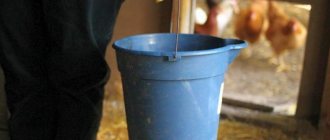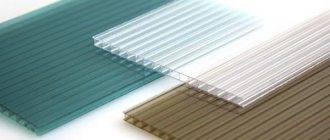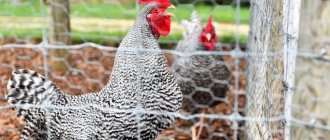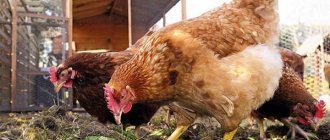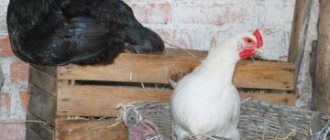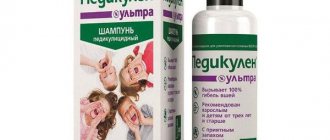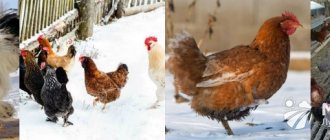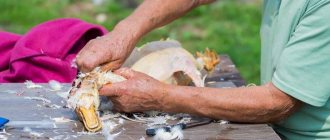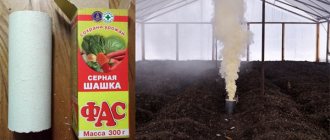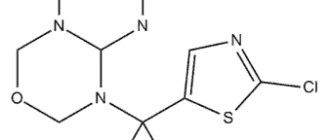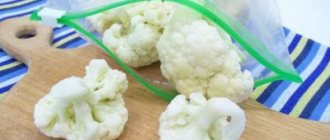Kinds
Disinfection of a chicken coop at home is divided into three main types:
- Preventive. Treatment is carried out once every six months or quarterly, when the seasons change.
- Forced. Procedures are carried out urgently when parasites are detected or after an outbreak of disease among birds.
- Final. The treatment is carried out after laboratory confirmed complete recovery of the birds from the detected disease.
In addition, several types of disinfection at home can be distinguished according to the chosen disinfection method:
- Chemical - to destroy parasites and bacteria, drugs in liquid, powder or gaseous form are used. The products can be aggressive in composition or safe for the birds themselves.
- Physical - disinfection is carried out using ultraviolet or quartz lamps, boiling water or hot steam.
- Biological - the method is used relatively rarely. In the process of destroying bacteria and insects, living organisms are used, which are natural enemies for pathogens, but in themselves do not pose a danger to chickens.
- Mechanical - the method involves the complete replacement of perches, water and food containers, as well as the removal of flooring and the top layer of the floor.
In case of serious outbreaks of diseases in the chicken coop, the listed methods are combined with each other. This allows you to achieve maximum effect at home.
Classification of floor mats
The litter in the poultry house can be changed daily or periodically. It varies in the depth of the flooring and the materials used.
By depth
The litter can be thin and deep. The thickness of the flooring depends on the time of year and the frequency of replacement.
The thin coating consists of a small amount of material. The thickness of the flooring is 12-21 centimeters. A thin layer of straw or sawdust is spread on the floor in the summer and removed every week.
Deep litter is more suitable for the winter months. The thickness of the layer ranges from 30 to 50 centimeters. This coating allows you to insulate the floor in the poultry house. First, pour a layer of 32 centimeters. When it gets dirty, it is not removed, but fresh dry material is simply added on top.
Biochemical processes will take place in the lower layer: bird waste will decompose and heat will be released. Deep litter is not removed from autumn to spring. However, anaerobic bacteria can become active in it, resulting in rotting processes. Birds can develop serious illnesses.
By materials used
You can make organic litter yourself. Straw, sand, hay, peat or sawdust are used as floor coverings for poultry houses. These materials absorb moisture perfectly, and cost pennies.
Chicken coop litter with bacteria
In the fall, before the onset of cold weather, you can lay a thick layer of hay or sawdust in the poultry house and treat it with a preparation consisting of beneficial microorganisms. Bacteria will process the droppings into compost. As a result of this reaction, heat will be released.
The fermentation litter will ensure the decomposition of waste products of chickens, the release of heat and heating of the surface to +26...+35 degrees, and the additives included in the bacterial preparation will neutralize unpleasant odors.
There are a huge number of biological products for preparing bacterial litter in the poultry house (BioGerm, Netto-Plast, Bio-Side, Baikal EM1).
Hay and straw
These natural materials are found in any agriculture. Hay and straw are prepared in the summer: cut grass or stems of cereal crops are dried in the sun, placed in a stack, covered with film, and chopped before use. Then lay it on the floor as needed.
Hay and straw quickly absorb moisture, neutralize odors, retain heat, and are completely safe for birds.
Dry leaves
Dry leaves that have fallen from trees can be placed on the floor of the poultry house. True, the foliage can be chopped before use. For the chicken coop you can use maple, linden, birch, and walnut leaves. The main thing is that they are dry, without signs of rotting or mold.
Dry moss
Moss (sphagnum) absorbs moisture well and neutralizes unpleasant odors. It grows in a swamp and is not so easy to collect. You can combine sphagnum with sawdust, that is, use moss more economically.
Peat
This natural material absorbs carbon dioxide and ammonia evaporation well. Peat is taken in pure form or mixed with other materials. Peat litter has antiseptic properties and helps prevent infectious diseases. Peat must be dry and crushed. In southern latitudes, instead of peat, you can take sand.
Needles
The floor of the chicken coop can be covered with pine needles. True, sharp needles can injure the delicate skin of chicken feet. It is better to finely chop the pine needles. It should be remembered that such material contains many biologically active substances and phytoncides. Vapors from essential oils in high concentrations can affect the well-being of birds. It is better to mix pine needles with other organic materials.
Wood sawdust
Cheap and available material. Sawdust quickly absorbs moisture, retains unpleasant odors, fumes and generates heat even without the use of fermentation substances. In addition, chickens love to dig into such a substrate. Sometimes hungry birds swallow sawdust. It is better to prevent this and feed the chickens to their full.
Tips for maintaining cleanliness after disinfection
After using lime in the house, the floor and perches should be cleared of excess lime. Birds are allowed inside after the walls have completely dried and the house has been ventilated. Additionally, it is recommended to thoroughly clean the surrounding exercise area.
After disinfection, it is recommended that the house remain clean longer;
- use mobile perches, as they are easier to care for;
- Place plastic trays under the perch to collect droppings;
- keep purchased chickens quarantined in a separate room and treated for parasites before introducing them into the flock;
For hygiene purposes, the straw bedding should be covered with a small amount of clean sand.
Preparation for the process
Before you begin disinfecting indoors, you need to carry out several preparatory steps. Cleaning preparation includes the following:
- Cobwebs are removed from all surfaces and nests, and dust and dirt deposits are wiped off with a dry cloth. Then they clean out the droppings and shake out or renew the flooring.
- All metal structures in the poultry house are disinfected by heating. Most often, a blowtorch is used to complete the task.
- After dry cleaning, all internal concrete surfaces are covered with freshly slaked lime mixed with copper sulfate. The procedure is necessary to reduce the likelihood of fungal yeast formation.
Simultaneous processing of premises and birds
Large poultry farms have a certain period of time between the slaughter of old chickens and the introduction of young chickens. This pause is used to disinfect the house. On farms and vacation homes, the coop is always busy, so it often has to be handled with the birds inside. The compounds used are non-toxic and safe for birds:
- Vercon and Monclavid;
- Ecocide S and Virocide;
- other.
In addition to industrial products, iodine and aluminum monochloride can also be used.
Independent actions or the work of professionals?
If desired, the farmer can use the services of professional disinfectors who will carry out sanitary measures reliably and in a short time. The main disadvantage of such services is the price, which can reach several thousand rubles depending on the size of the room and the drugs used.
Self-disinfection will cost less, but it will require a lot of time.
Disinfectors use special certified preparations, while a farmer can use traditional “household” substances with a milder effect. But if necessary, the owner of the chicken coop can also purchase professional products.
What drugs should I use?
Compared to home-use substances, store-bought products have a number of advantages.
- The drugs contain several components, which provides a wide range of effects, that is, they are more effective. In one treatment procedure it is possible to get rid of most, if not all, parasites and harmful bacteria.
- They have been tested for safety and effectiveness. There are instructions for use, the effect on birds and people is determined, and possible side effects are indicated.
- More obvious use. Everyone uses homemade medications as they wish and in varying quantities. Ready-made products have a clear dosage and a technical support line for consultations.
Most disinfectants are applied by aerosol. Sprayed using a disinfection unit, motor sprayer or cold fog generator. The video shows the disinfection procedure using a motor sprayer, that is, professional disinfection of the poultry house is performed. The process itself takes little time and is quite simple; much more costs are incurred in preparing and cleaning the premises.
Video - Processing the poultry house
Among the special means for disinfection, “Virocid” ; it is sold in 20 liter canisters. The drug has a wide range of effects on various spores, bacteria, insects and other pests. Produced in Belgium. It is quite safe and can be used in the presence of birds, but the concentration of active substances must be reduced (mixed with water). There is no need to remove residual particles of the product from surfaces, since it is non-toxic and biodegradable.
No worse than the drug "Glutex" , which is effective against all known pathogens. It has 3 active ingredients with a synergistic effect: didecyldimethylammonium, glutaraldehyde and glyoxal. Sold in containers of 1 liter and 5 liters, the liquid is concentrated, so it is diluted with water 1 to 100-200 to reduce toxicity. Manufacturer Russia. The resulting solution is neutral to fabrics, metals, and various surfaces.
The main effect is considered bactericidal, but additionally has virucidal and fungicidal effects. The use of the composition implies the need to eliminate poultry and pre-clean the room. The approximate consumption is 0.3 l/m2 with a solution concentration of 0.5%.
Forced disinfection, which is caused by the presence of pests, is performed with a solution with a more saturated dosage of 1%. The solution prepared in this way has a consumption of about half a liter per 1 m2. The product has a shelf life of 3 years.
The drug "Glutex" is most effective when irrigating the surface, but washing and spraying are also considered acceptable. The room should be sealed for 3 hours, after disinfection, the cage components that directly touch the birds should be washed with water. The drug is most active for 7 days.
Several best drugs
Experts have widely differing opinions regarding the effectiveness and efficiency of the use of drugs. Most people consider Virocid, Glutex, Ecocide S and Delegol to be the best substances. The first two representatives have been considered, let's move on to the rest.
“Ecocide S” is a product presented in the form of a powder concentrate. It has a complex effect; the drug is based on a triple salt. Additionally, organic acids, inorganic salt additives, and surfactants are used. These components have an unpleasant odor, which is why citrus flavoring is present.
The drug is distributed in a variety of containers from 50 g to 2.5 kg. The shelf life of the substance is 5 years, provided it is kept in a dry place, protected from sunlight. The depressurized drug retains its properties for 1 month. The diluted solution should be used within one week. “Ecocide C” is considered an oxidizing agent, which enhances its properties several times, but does not cause metal corrosion.
Before treatment, the birds should be removed; the procedure lasts 2 hours. After finishing another 5-6 hours, you should leave the chicken coop empty.
It's better to take the chickens outside
A 1% solution is used for disinfection; all surfaces are treated with it. It is also possible to have a preventive sanitary procedure for water using Ecocide S, then the dosage is 0.5%. The drug has a hazard class 3, you will have to follow basic precautions.
"Delegol" is a drug with a rich complex of active substances. Allows you to eliminate bacteria of various origins. It comes in the form of a bluish liquid that mixes easily with water. Shelf life 3 years at temperatures above +6°C.
The sanitary procedure is carried out through fine-drip irrigation. It is necessary to cover all surfaces with the substance, and all living creatures will have to be driven out, since the drug is quite toxic. Avoid contact with mucous membranes.
To perform the procedure, you should prepare a 1% solution, where the consumption is 0.5 l per 1 m2. Exposure when using “Delegol” is 6 hours. When the concentration decreases to 0.75%, the exposure should be increased to 12 hours. It is strictly forbidden to exceed the concentration of the substance, otherwise harm to the chickens may occur.
